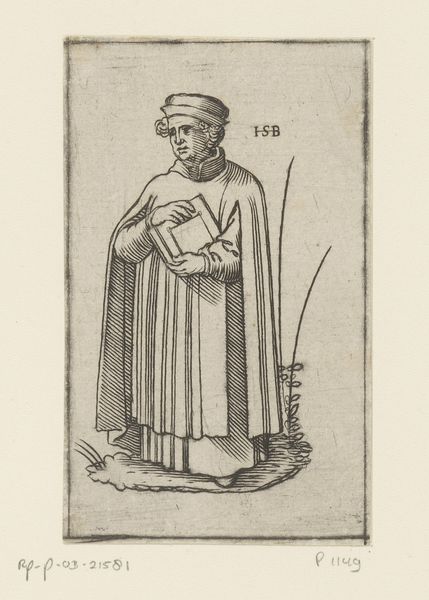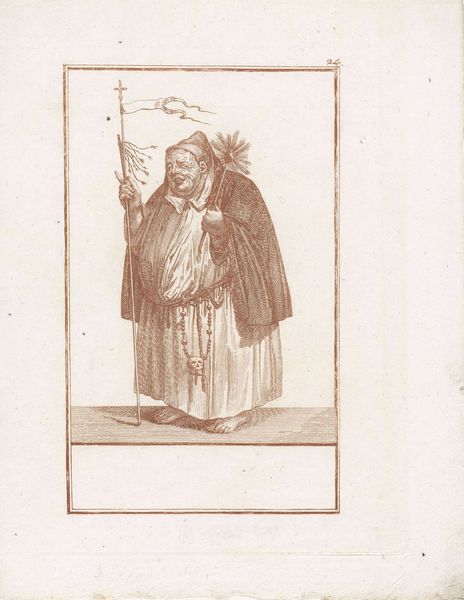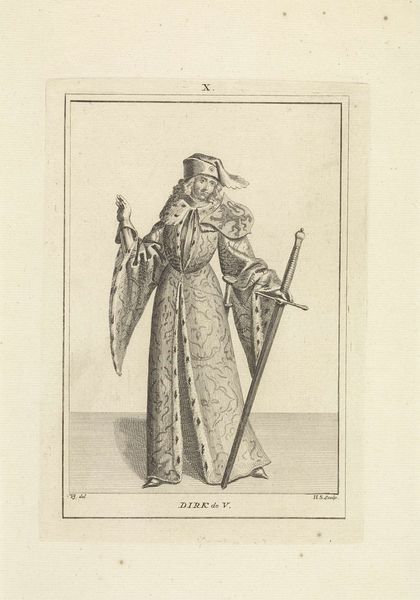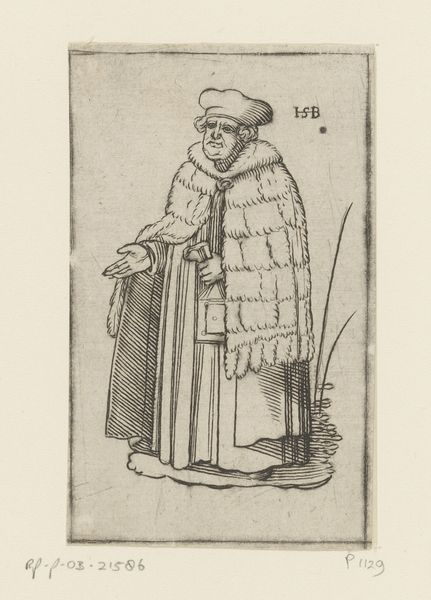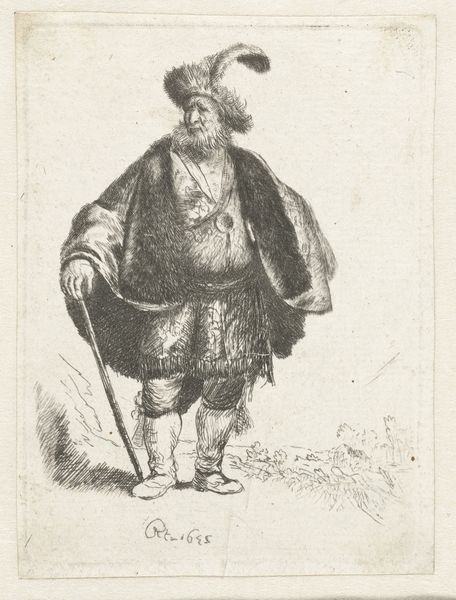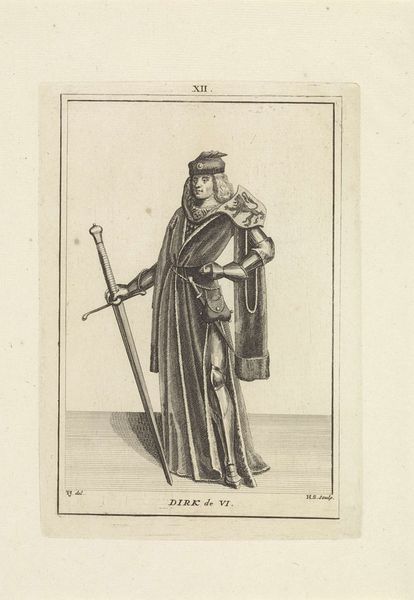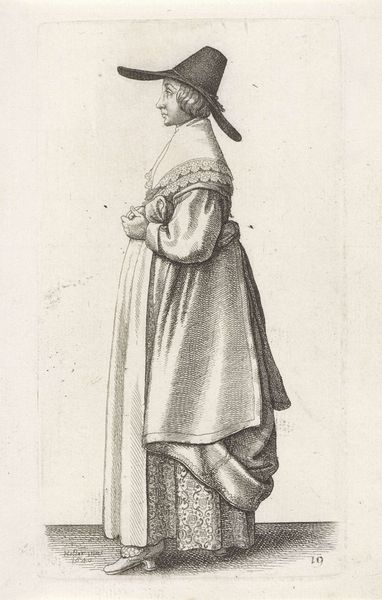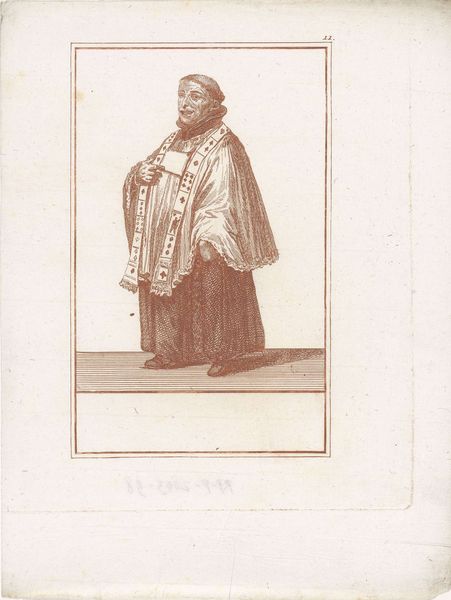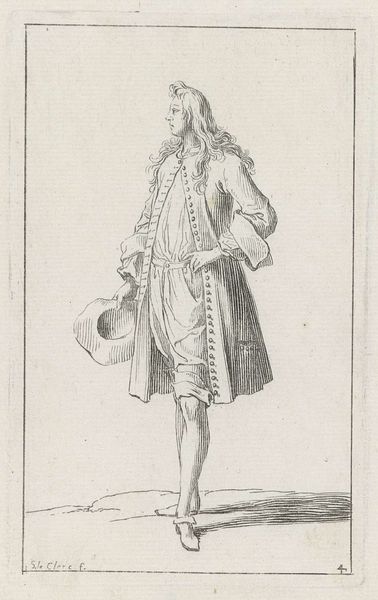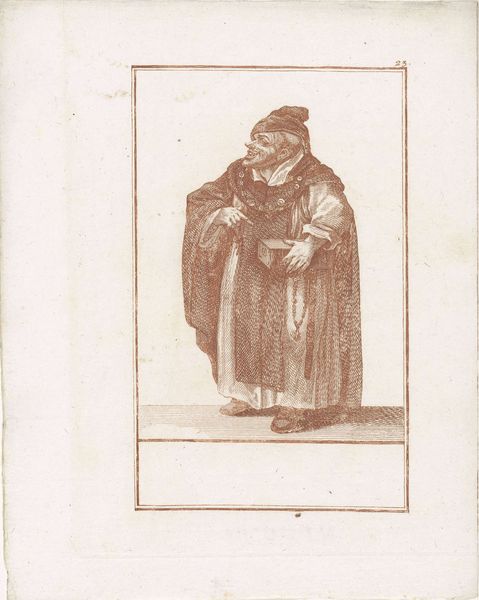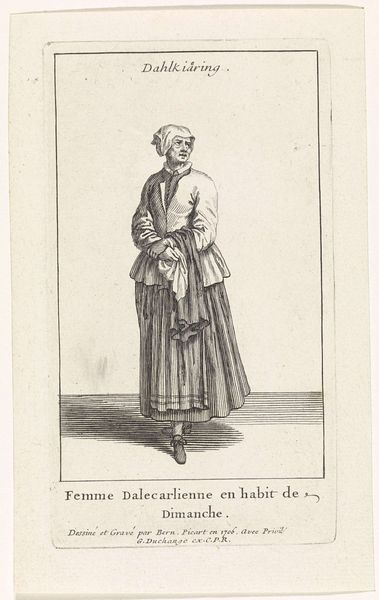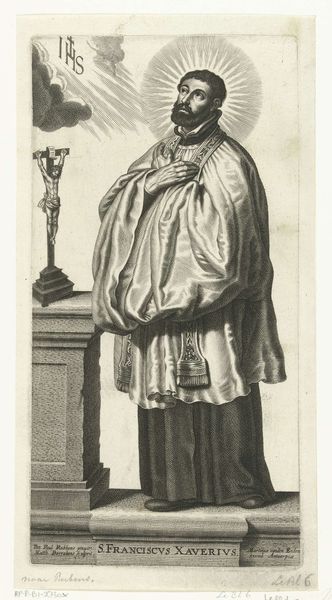
print, engraving
#
portrait
#
baroque
# print
#
figuration
#
engraving
Dimensions: height 235 mm, width 182 mm
Copyright: Rijks Museum: Open Domain
Editor: We're looking at "Monnik met haardijzer om de nek," or "Monk with curling iron around his neck," an engraving by Jacob Gole, from 1724. It feels a little satirical, like a commentary on the church, maybe? How do you interpret this piece? Curator: That's a sharp initial assessment! As a historian, I’m drawn to the cultural context. What statement could Gole be making about piety and the Church by portraying a monk, in full religious garb, carrying a curling iron like a holy relic? Do you think this print might have been commissioned or circulated during a time of religious upheaval or criticism? Editor: It could be! It definitely makes you think about the visual presentation of piety versus actual devotion. The monk’s elaborate robes and posture almost seem like a performance. Curator: Exactly! The choice of engraving as a medium is also important. Prints allowed for wider dissemination of images and ideas, particularly satirical ones. Consider who the audience might have been and what message Gole, and his publisher, might have been trying to convey through this accessible and reproducible format. Was it just humorous, or did it reflect wider sentiments? Editor: So it's not just about the monk himself, but the social context that gave the image meaning and power. I never thought about how the medium contributes to the overall interpretation, it is much more complex than I previously expected! Curator: Precisely! Analyzing art requires understanding the visual language of its time, its distribution, and its reception within society. Art is rarely created in a vacuum. Editor: That's a really helpful way of thinking about art history. I’ll remember to think about the bigger picture from now on!
Comments
No comments
Be the first to comment and join the conversation on the ultimate creative platform.
